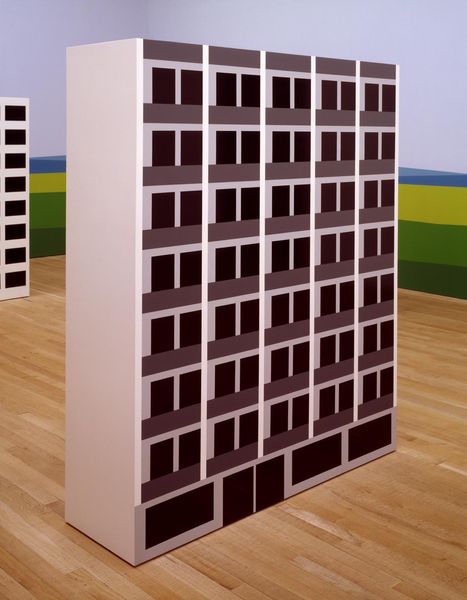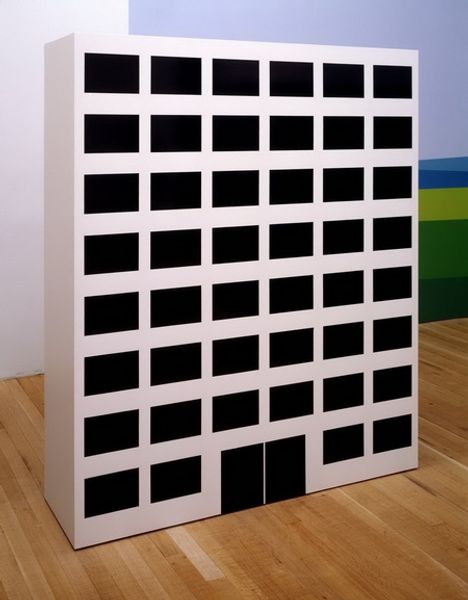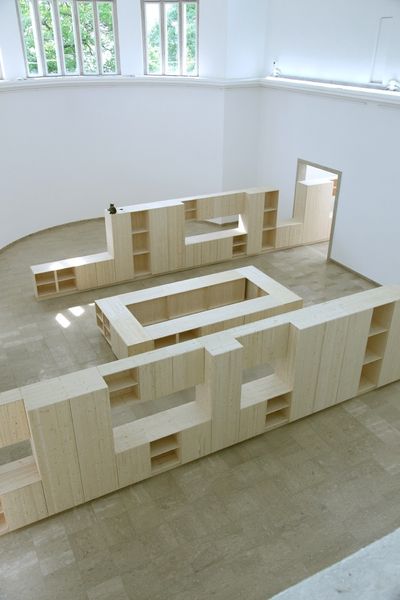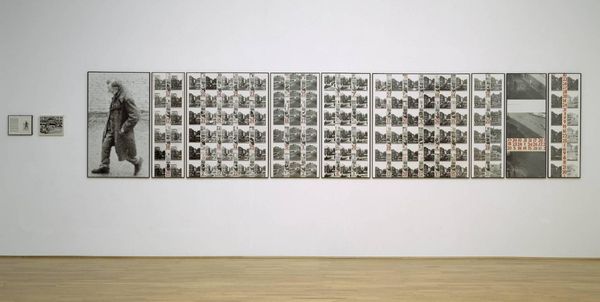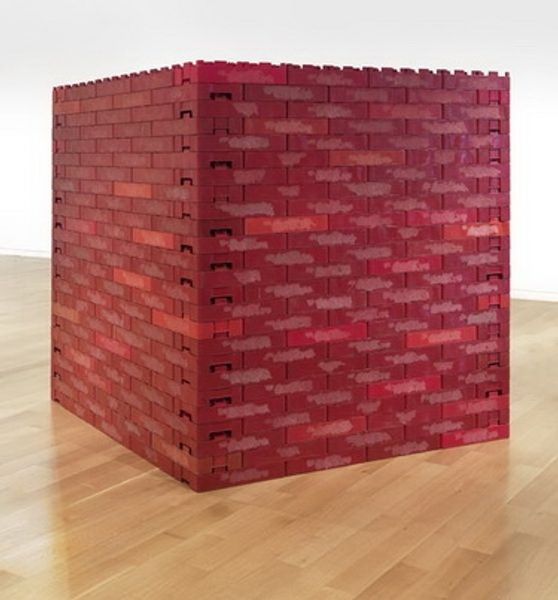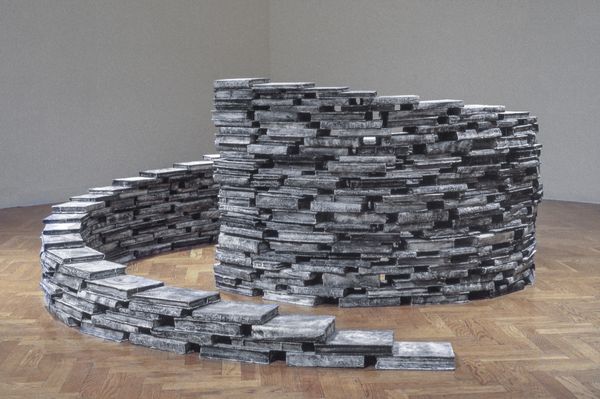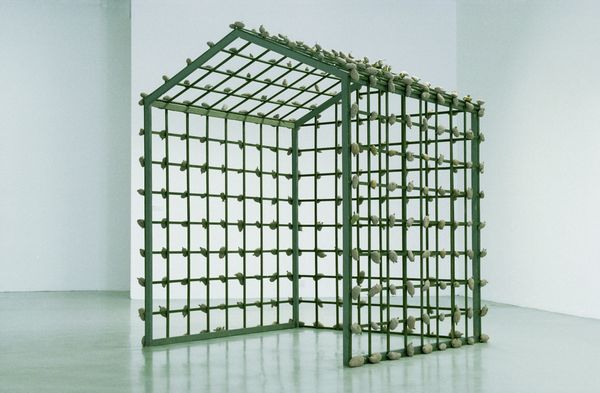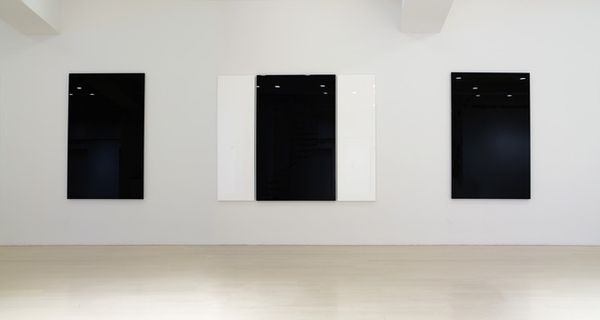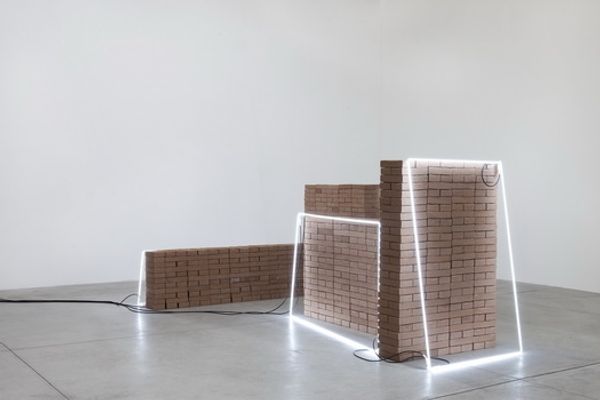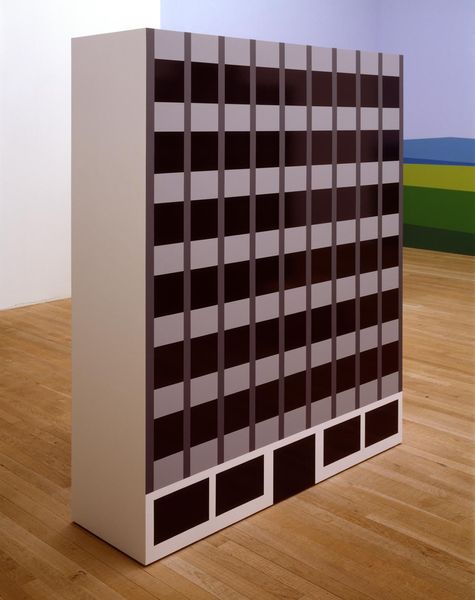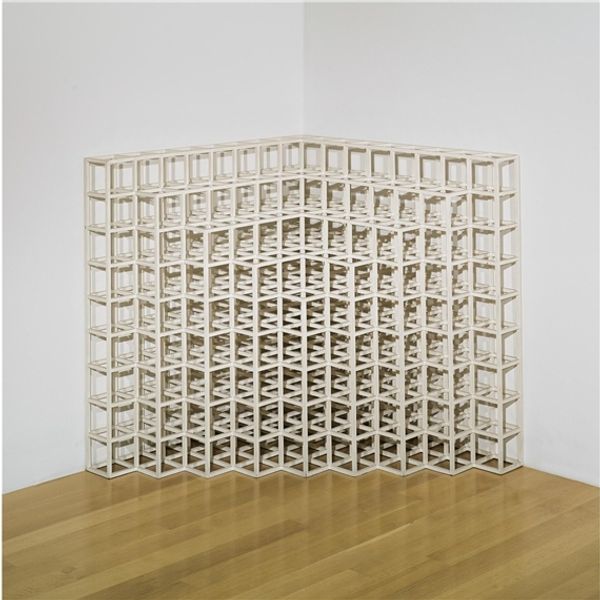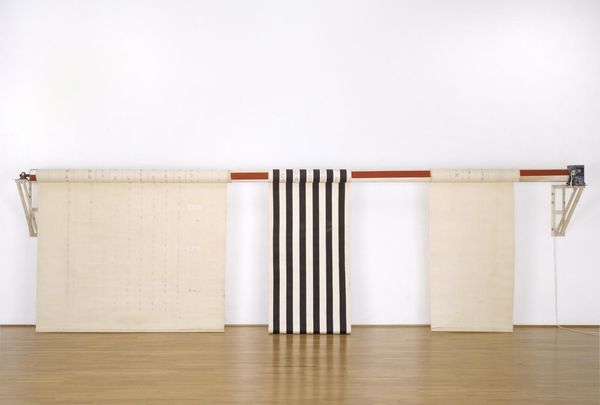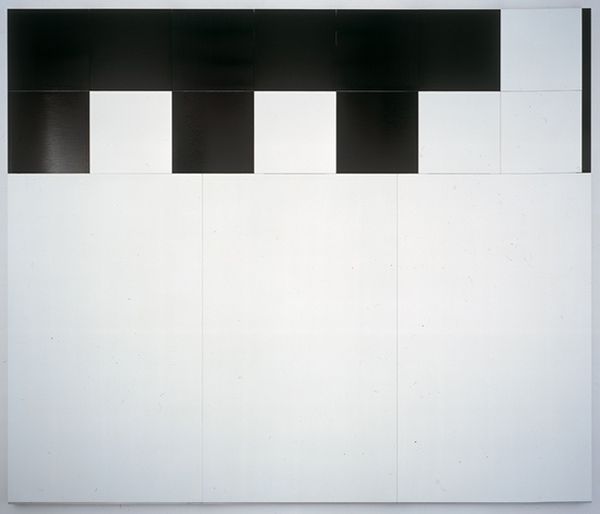
Dimensions: unconfirmed: 1845 x 1535 x 453 mm
Copyright: © Julian Opie | CC-BY-NC-ND 4.0 DEED, Photo: Tate
Curator: Immediately, I'm struck by the feeling of isolation. These simplified building facades almost feel like tombstones. Editor: This is Julian Opie's "You see an office building. 2," part of the Tate Collection. These aren't just paintings, though. They’re large, freestanding constructions—almost minimalist sculptures using building facades as their motif. I wonder what sort of material contributes to their presence? Curator: The uniformity speaks to the anonymity of modern urban life, doesn't it? Each building a symbol of relentless productivity, yet stripped bare of any individual character. Editor: Right, and the flatness of the surfaces combined with the dimensionality really plays with the idea of the readymade; perhaps Opie is highlighting the mass production of modern architecture itself. Curator: It’s interesting how Opie uses stark lines to evoke a sense of both order and detachment, reflecting a kind of coldness associated with corporate power. Editor: Absolutely, and considering the labor involved in constructing these pieces, it is impossible not to draw a contrast with the slick, effortless image they project. Curator: I find I’m now questioning the kind of cultural memory we assign to these commonplace structures. Editor: And I am left pondering the relationship between the material world and the streamlined representation Opie is giving us.
Comments
tate 6 months ago
⋮
http://www.tate.org.uk/art/artworks/opie-you-see-an-office-building-2-t07208
Join the conversation
Join millions of artists and users on Artera today and experience the ultimate creative platform.
tate 6 months ago
⋮
You see an office building. 2 and its companions, numbers 3 (Tate T07209), 4 (Tate T07210) and 5 (Tate T07211), are four rectangular floor-standing units of the same size. Opie created nine in this series in 1996. They are hollow, rectangular boxes constructed from MDF board, raised slightly off the floor with four narrow feet on the base of each. The boxes were roller-painted with white paint in the manner of a wall. Simplified architectural details in regular geometric patterns of squares, rectangles and stripes were then added in black and two tones of grey using a paint roller and masking tape system. The tops of the units are painted with a thin layer of white. Opie has explained:
